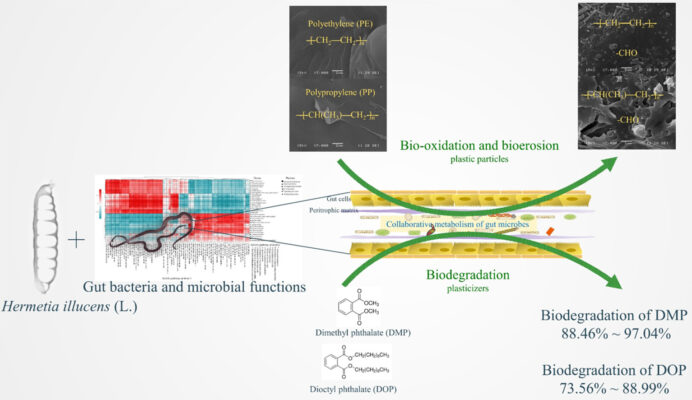
Black Soldier Flies Digest Plastic
With the help of associated microorganisms. This does not mean that black soldier flies can be switched onto a diet of recycled bottles. However, looks like they may be able to break up some of the plastics potentially present in mixed wastes.
Wang, J., Liu, C., Cao, Q., Li, Y., Chen, L., Qin, Y., Wang, T. and Wang, C., 2024. Enhanced biodegradation of microplastic and phthalic acid ester plasticizer: The role of gut microorganisms in black soldier fly larvae. Science of The Total Environment, 171674.
Hermetia illucens larvae are recognized for their ability to mitigate or eliminate contaminants by biodegradation. However, the biodegradation characteristics of microplastics and phthalic acid esters plasticizers, as well as the role of larval gut microorganisms, have remained largely unrevealed. Here, the degradation kinetics of plasticizers, and biodegradation characteristics of microplastics were examined. The role of larval gut microorganisms was investigated. For larval development, microplastics slowed larval growth significantly (P < 0.01), but the effect of plasticizer was not significant. The degradation kinetics of plasticizers were enhanced, resulting in an 8.11 to 20.41-fold decrease in degradation half-life and a 3.34 to 3.82-fold increase in final degradation efficiencies, compared to degradation without larval participation. The depolymerization and biodeterioration of microplastics were conspicuously evident, primarily through a weight loss of 17.63 %–25.52 %, variation of chemical composition and structure, bio-oxidation and bioerosion of microplastic surface. The synergistic effect driven by larval gut microorganisms, each with various functions, facilitated the biodegradation. Specifically, Ignatzschineria, Paenalcaligenes, Moheibacter, Morganella, Dysgonomonas, Stenotrophomonas, Bacteroides, Sphingobacterium, etc., appeared to be the key contributors, owing to their xenobiotic biodegradation and metabolism functions. These findings offered a new perspective on the potential for microplastics and plasticizers biodegradation, assisted by larval gut microbiota.
